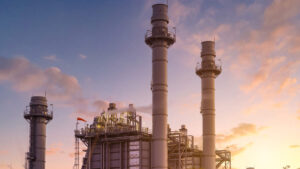GOT GAS: The one with shortcuts for offshore gas approvals

Is this the shortcut we need to take for offshore gas projects? Pic via Getty Images
The Albanese Government is proposing changes to the Environment Protection and Biodiversity Conservation Act (EPBC) aimed at reducing red tape and streamlining the assessment process for offshore gas projects.
These include new legislation, the establishment of an agency to oversee development decisions and giving the government what some accused as an “override” to insulate offshore gas projects from higher environmental standards though this power will last for just 12 months.
It comes as gas producers warn that Australia urgently needs new investment in domestic gas supply and infrastructure in order to provide energy security and affordability for households and businesses.
Speaking at the Australian Domestic Gas Outlook (ADGO) conference in Sydney, ExxonMobil Australia commercial director David Berman said that without investment, 2030 domestic gas supply to the southern states would fall by 44%.
This is a view shared by the Australian Energy Market Operator (AEMO) which warned in its 2024 Gas Statement of Opportunities that all its scenarios had identified the urgent need for new investments to maintain supply adequacy.
Berman added that while onshore and offshore drill permits would take mere months to be approved from application in the US, the same process could take up to two years in Australia.
While long wait times for exploration permits are bad enough, development approvals are downright crippling with Senex Energy chief executive Ian Davies saying that it takes almost three years for new projects to be approved.
LNG imports to address shortfalls
Other exoerts said it was “counterintuitive” that one of the world’s largest LNG exporters was experiencing domestic gas supply concerns though this might be due to most production in the east coming from Queensland while demand came from southern states.
Institute of Energy Economics and Financial Analysis analyst Kevin Morrison said that it would be expensive to expand the existing network of pipelines to allow more gas from Queensland to be sent south, particularly since demand was seasonal and is projected to fall as electrification continued.
As such, building a LNG import terminal made more sense – particularly a floating terminal that could be used to meet these short-term demand spikes when combined with additional storage capacity.
However, others believe that Australia still has abundant reserves of its own and should prioritise their development, claiming that LNG imports would be both costlier and more polluting than domestic gas.
Do we actually need faster approvals for offshore gas?
Cutting red tape is never a bad thing as long as the proper safeguards, particularly environmental ones, remain in place.
Approvals that take years to complete are precisely the last thing that anybody wants as they could weigh negatively on investment decisions when action is needed urgently to address potential supply issues.
However, while getting offshore gas projects across the line as quickly as possible might seem like the right answer to address forecast gas shortages, there is also a strong argument that this is a short-sighted move that might come back to bite us.
There is a very real danger that rushing projects through could leave ESG impacts unaddressed.
Additionally, commentators pointing out that we still have a significant export business have a point that Australia actually has plenty of gas at its fingertips. We just have to bite the bullet when it comes to prioritising domestic use over contracted exports.
And we might not have less to worry about on that front as Qatar is moving to massively expand its exports. This could lower LNG prices and make supplying domestic gas that much more attractive for Australia’s LNG producers.
There is also a case for a temporary import terminal, though there might be a chance that gas imported through it might actually come from the LNG facilities at Gladstone rather than overseas.
Related Topics

UNLOCK INSIGHTS
Discover the untold stories of emerging ASX stocks.
Daily news and expert analysis, it's free to subscribe.
By proceeding, you confirm you understand that we handle personal information in accordance with our Privacy Policy.








